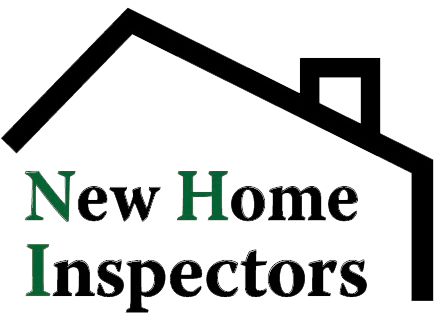
Before buying or selling a house on Long Island, reach out to New Home Inspectors to examine the property. While it may seem appealing to save a couple bucks, a home inspection should not be skipped.
As a potential buyer, you can request repairs to be made before finalizing the sale. Evaluating the condition of the plumbing system is a major point on a home inspector’s checklist. For a better understanding of the process, below are a few plumbing red flags a home inspector will look for.
Common Plumbing Issues on a Home Inspection
1. Damaged Pipes
Cracked and corroded water pipes compromise the quality of the entire plumbing system. As a certified home inspector, we will examine the condition of the fixtures, noting any problems. In older homes, they might also recommend replacing outdated pipes to bring the property up to code. For example, galvanized pipes should be removed, as they contain lead and other materials that can contaminate the water.
2. Broken Toilet Seals
Leaking plumbing fixtures can cause mold growth, structural damage, and high water bills. During the walk-through, we will look for moisture around toilets. If the wax seals are broken, water can seep out of the fixtures and saturate the floor. An inspector will include a note that the seals need replacements in their report.
3. Drainage Problems
During your home inspection, we’ll run all fixtures and appliances in the building to assess the drainage. Additionally, we’ll inspect all of the visible drain lines for excessive corrosion and leaks at all fittings and joints.
Based on the age of the structure, John will advise you on proper maintenance to prevent future problems in your drainage system.
4. Clogged Sewer Lines
A sewer line clog is something that you definitely don’t want to have to deal with. If left without repair, it could lead to raw sewage backing up out of the drains. Obviously, this can cause considerable (and unsanitary) damage to your property. The problem with this is that it’s especially difficult to diagnose, and the pipework is underground.
Fortunately, the sewer line will show warning signs before it’s too late, like gurgling sounds and slow draining issues, along with a foul odor. Eventually, the wastewater will back up into your home since it has nowhere else to go, and you’ll begin to get very unpleasant spillages around the property.
Many things can cause sewer lines clogging, mainly broken sewer lines that fill with dirt and tree roots growing into the sewer line. We can identify these issues and make sure you’re aware of them before they become too severe.
5. Cross-Connection Issues
Cross-connection issues occur when the plumbing units permit contaminated water to enter back into potable water. If the usual pressure of the water system experiences disruption, and the water level is above the faucet with no air gap, back flow can occur. As a result, the home’s water supply becomes contaminated.
If the filtered drinking water becomes contaminated by your laundry or bathwater, the chemicals will make it unsafe to consume. This condition is common in older homes and DIY installations.
Many appliances come with back flow preventers already incorporated, but some will need to have back flow preventers installed. In fixtures that pose a more hazardous risk of contamination, the preventers should receive annual testing to ensure they’re working efficiently.
Our inspectors will look for any obvious cross-connection issues throughout the house during the inspection. They will examine appliances like dishwashers, washing machines, bathroom fixtures, and sump pumps.
6. Undetected Leaks in Walls
Hidden leaks in the wall, or under floorboards, are among the severest causes of water wastage in the country. In fact, the average household leak in the U.S. accounts for nearly ten-thousand gallons of wastewater each year!
These hidden leaks can persist for months, or even years, before anyone locates them. Most of the time, they’re completely silent, which makes them so notoriously hard to detect.
If leaks are left untreated for a considerable amount of time they can cause some very serious issues throughout the house, such as:
- Foundation shifting: water is the number-one source of foundation movement. Leaks that persist for a considerable amount of time can erode the soil, causing foundations to shift and move.
- Cracking: water leaks inside walls, or in basements and crawl spaces, can allow spot settlement. This causes cracks to form in exterior or interior walls.
- Mold & mildew: one of the most common issues concerning water leaks is mold and mildew. It forms when mold spores in the air begin to form growth on wet surfaces. Mold and mildew can grow on surfaces where moisture exceeds twenty percent. Active mold growth in a house can lead to respiratory illnesses, allergic reactions, and asthma, among others.
- Uneven floors: water leaks in basements, and particularly in crawl spaces, can cause settlement, which causes uneven floors due to issues like wood rot.
Fortunately, most of these leaks can go away with a quick call to a plumber. Most leaks are pretty easy to repair, and may be as simple as fixing a leaky faucet or one loose pipe. However, left without repairs, it can create a series of problems that can cost thousands of dollars to repair.
Final Thoughts
Of course, plumbing issues can be a major headache for any homeowner. However, at New Home Inspectors, our commitment is to identifying these issues well before they become a problem for you. When it comes to Long Island real estate, receiving a thorough, professional home inspection is the safest, easiest way to eliminate potential plumbing issues and restore your peace of mind. For more information, contact New Home Inspectors now!
Love flips. Even at 2000000
Posted by New Home Inspectors on Wednesday, August 11, 2021

